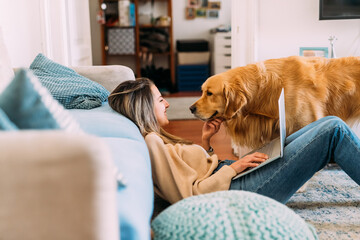Senior Discounts Available
Our pets are cherished members of the family, and ensuring their safety and well-being is paramount. Creating a secure environment for pets involves addressing potential hazards in the home, providing proper identification, and being prepared for emergencies. This comprehensive guide covers essential tips for keeping your pets safe both indoors and outdoors, offering practical advice on securing hazardous items, outdoor safety precautions, and emergency preparedness.

A pet-friendly home is one where hazards are minimized, and safety is a priority. Here’s how you can make your home safer for your furry friends:
Pet-proof your home by removing hazards, ensuring your pets’ safety. Select safe, non-toxic toys and chewing items. Keep toxic household plants and chemicals out of reach to prevent potential harm.
Choose safe, non-toxic toys and chewing items for your pets to prevent choking hazards or toxic exposure. Opt for durable materials and avoid small parts that could be swallowed or cause harm.
Keep toxic household plants and chemicals out of your pet’s reach. Some common plants and cleaning products can be harmful if ingested, so ensure they are stored safely to prevent accidents.
Pets, especially young ones, are curious and may chew on electrical cords, leading to injury. Hide or cover all cords and wires to keep them safe from harm.
Cleaning supplies, medications, and sharp objects should be kept in locked cabinets or on high shelves to prevent pets from accessing and accidentally ingesting or injuring themselves.
Certain areas, like staircases or kitchens, can pose risks to pets. Use baby gates or barriers to restrict access and prevent potential accidents or injuries.
Proper identification is crucial in case your pet gets lost or separated from you. Here are some steps to ensure your pet can be easily identified and returned safely:
Outdoor adventures can be exciting for pets, but they also come with their own set of risks. Here are some tips to ensure your pet remains safe while outside:
01.
02.
03.
04.
05.
Keep a travel crate or carrier available for your pet. A crate can provide a safe and secure way to transport your pet during an evacuation or emergency situation. Make sure the crate is well-ventilated and comfortable for your pet.
06.
Creating a safe environment for your pets requires attention to detail and ongoing care. From pet-proofing your home to choosing safe toys and keeping harmful substances out of reach, these small steps ensure your furry friends stay healthy and happy. By following these essential safety tips, you can prevent accidents and provide a secure, loving space for your pets to thrive.
Ensure your pet’s safety with expert advice and guidance. Whether at home or outdoors, we offer essential tips to keep your pets safe and secure. Reach out to us today for more information.